Quick Airline Information:
✈Airline IATA* code: AC
✈Airline ICAO* code: ACA ✈Founded: 10 April 1937 ✈Website: www.aircanada.com✈Alliance: Star Alliance
✈History
✈Operations and Destinations 🌍
✈Fleet ✈️
✈Photo Slide 📷✈Safety Video 🎬✈Airline reviews ⭐
*IATA: (International Air Transport Association)
*ICAO: (International Civil Aviation Organization)
History Menu:
Air Canada's predecessor, Trans-Canada Airlines, was created by federal legislation as a subsidiary of Canadian National Railway on 11 April 1936. The first passenger flights flew on 1 September 1937, with an Lockheed 10 Electra carrying two passengers and mail from Vancouver to Seattle. The first aircraft to be used were two Lockheed Model 10 Electras and one Boeing Stearman biplane, which were purchased from Canadian Airways.
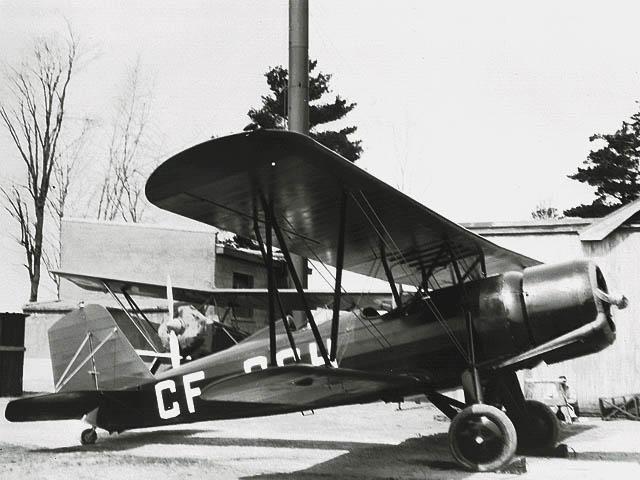
Transcontinental routes from Montreal to Vancouver began on 1 April 1939, using 12 Lockheed Model 14 Super Electras and six Lockheed Model 18 Lodestars. By January 1940, the airline had grown to about 500 employees. In 1945 Trans Canada Airlines acquired the DC-3, they flew the most popular routes and were in use till 1963.
.jpg)
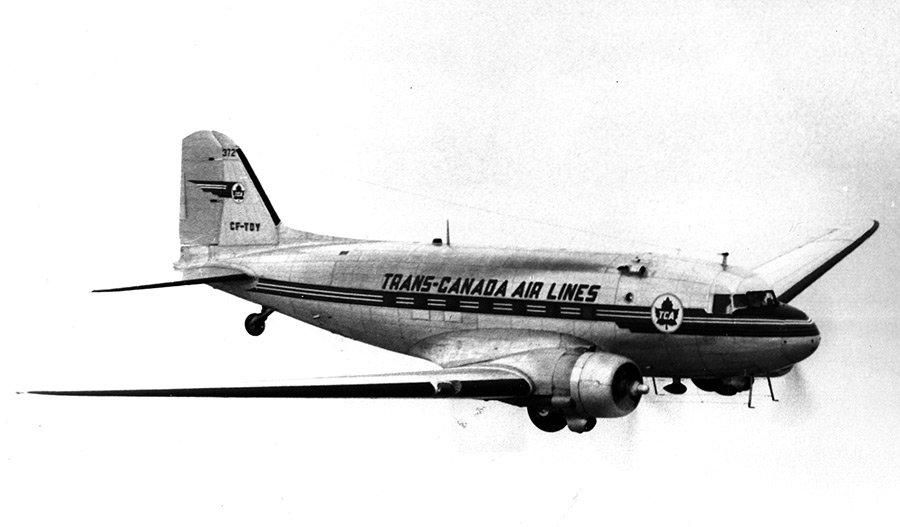
Another type also in operation was the Lockheed L-1049 Super Constellation from 1954. Later mode modern turbo-props like the Vickers Viscount and Vickers Vanguard joined in 1955 and 1961 respectively to replace the older types such as the Dc-3.
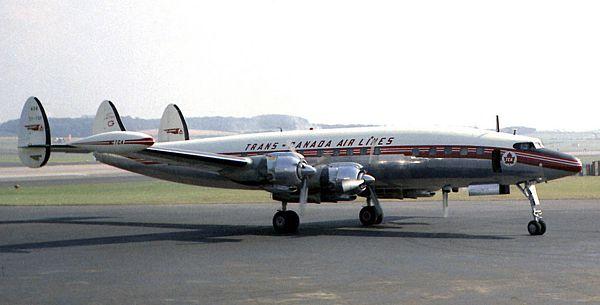
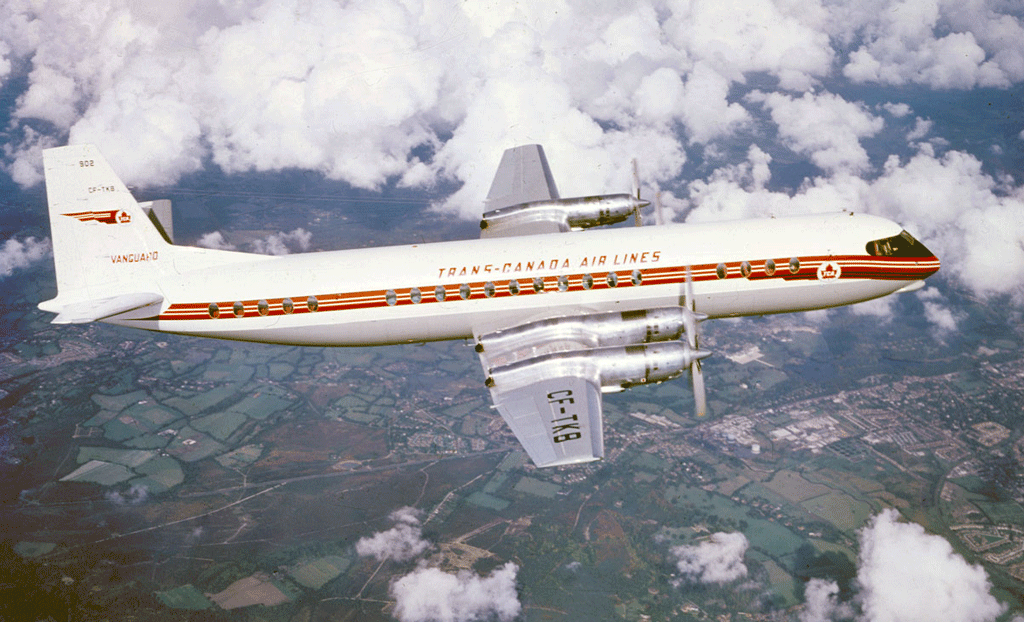
Trans-Canada Air Lines introduced the DC-8's on transcontinental routes on April 1, 1960 and overseas on June 1, 1960. The aircraft type was the first jet-engine powered plane to fly in Canada. It cut flying times by nearly 50%. The powerful jet was equipped with the latest navigational and radar technology allowing it to operate at altitudes of between 30,000 and 35,000 feet. The sleek jet was capable of carrying a load of 133 passengers (including crew) at speeds of more than 550 mph across Canada. TCA had grown to become Canada's national airline, in 1964, the name changed from Trans-Canada Airlines to Air Canada. Another jet aircraft to join the fleet was the DC9 used for short haul routes in 1966.

During the 1970s government regulations ensured Air Canada's dominance over domestic regional carriers and rival CP Air. The carrier's fleet expansion saw the acquisition of Boeing 747-100 and DC10 in 1971 and Boeing 727, 737-200 and Lockheed Tristar jetliners in 1973. The new 747's were introduced across Canada to fly to points in Europe during the Spring of 1971. The new wide-body configuration was an instant hit with passengers and crew, providing a new feel of space and luxury ,previously unknown in commercial aircraft.
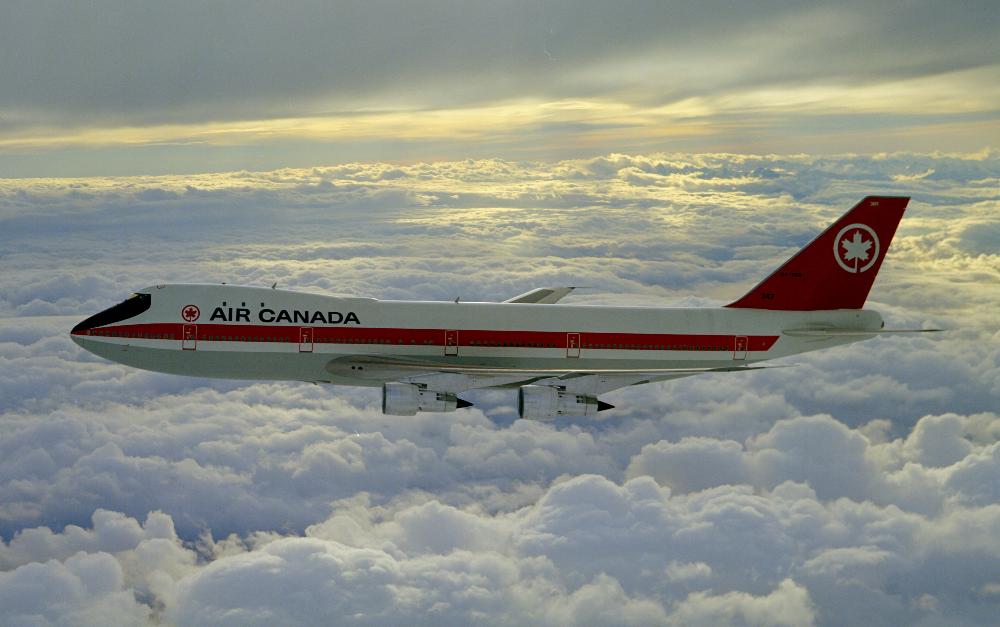
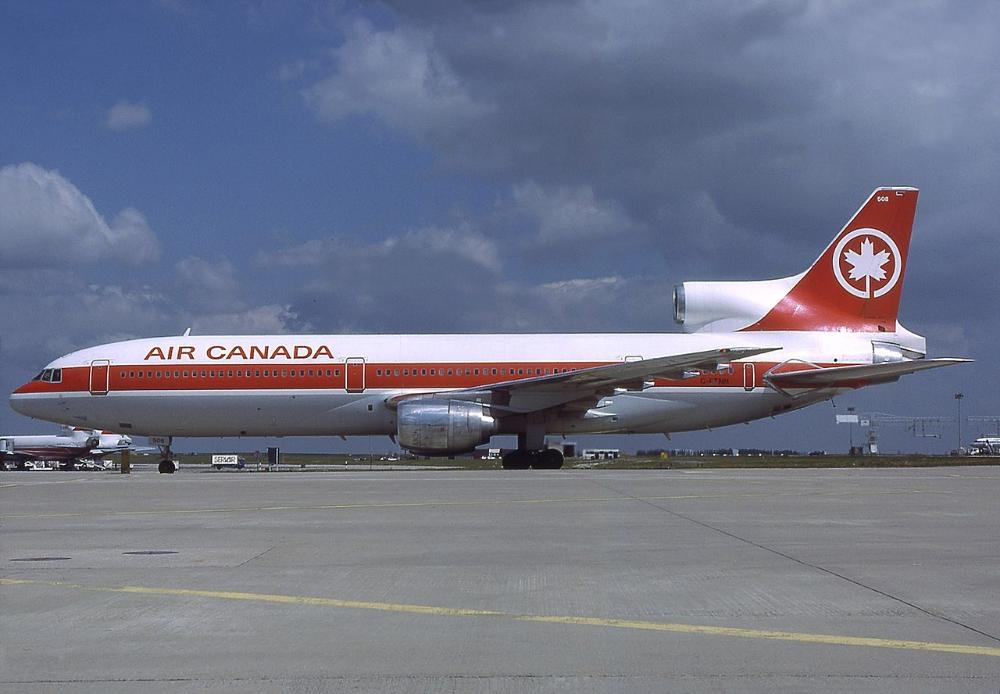
In 1983 it purchased a new aircraft, the Boeing 767, twin aisle jet, which had a better fuel consumption than the older types it was replacing like the Tristar's or DC10. On 7 December 1987, Air Canada became the first airline in the world with a fleet-wide non-smoking policy. In 1988 Air Canada was privatised, and 43% of shares are sold on the public market. By this time, long-haul rival CP Air had become Canadian Airlines International following their acquisition by Pacific Western Airlines. The new revitalised private company was formed in 1989, revealing a new corporate livery on it's aircraft and tail logo.
In the early 1990s, Air Canada expanded it's European routes and increased capacity with the arrival of the Boeing 747-400 Jumbo's in 1990. However, it encountered financial difficulties as the airline industry slumped in the aftermath of the Persian Gulf War. By 1994, Air Canada returned to profitability. In 1995, taking advantage of a new U.S.-Canada open skies agreement, Air Canada added 30 new trans-border routes.
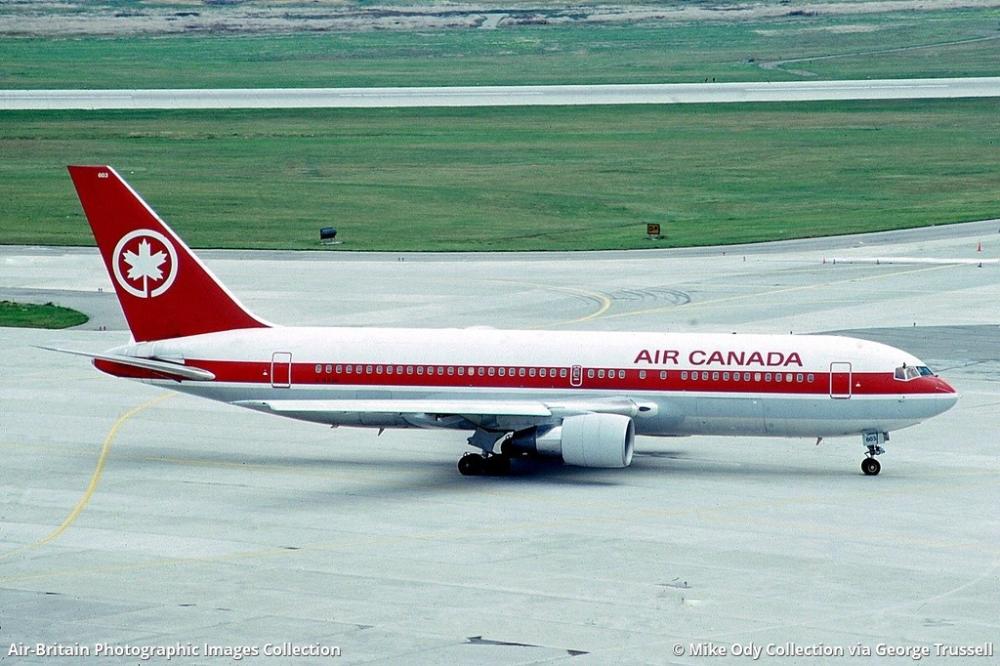
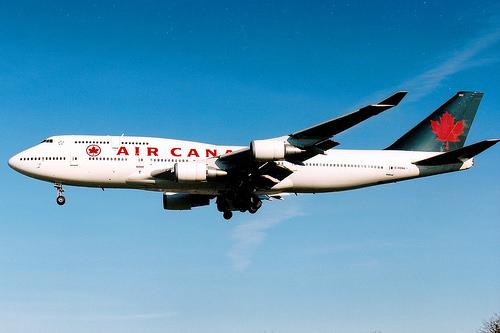
In May 1997, Air Canada became a founding member of the Star Alliance. In January 2001, Air Canada acquired Canada's second largest air carrier, Canadian Airlines, merging the latter's operations, becoming the world's twelfth-largest airline. On 31 October 2004, the last Air Canada Boeing 747 flight landed in Toronto from Frankfurt as AC873, ending 33 years of 747 service with the airline. The Boeing 747-400 fleet was replaced by the Airbus A330/A340 fleet.
On 19 October 2005 Air Canada unveiled a new aircraft colour scheme and uniforms. A Boeing 767-300ER was painted in the new silver-blue colour, and the dark green/almost black tail was replaced with a new version of the maple leaf known as the 'Frosted Leaf'.
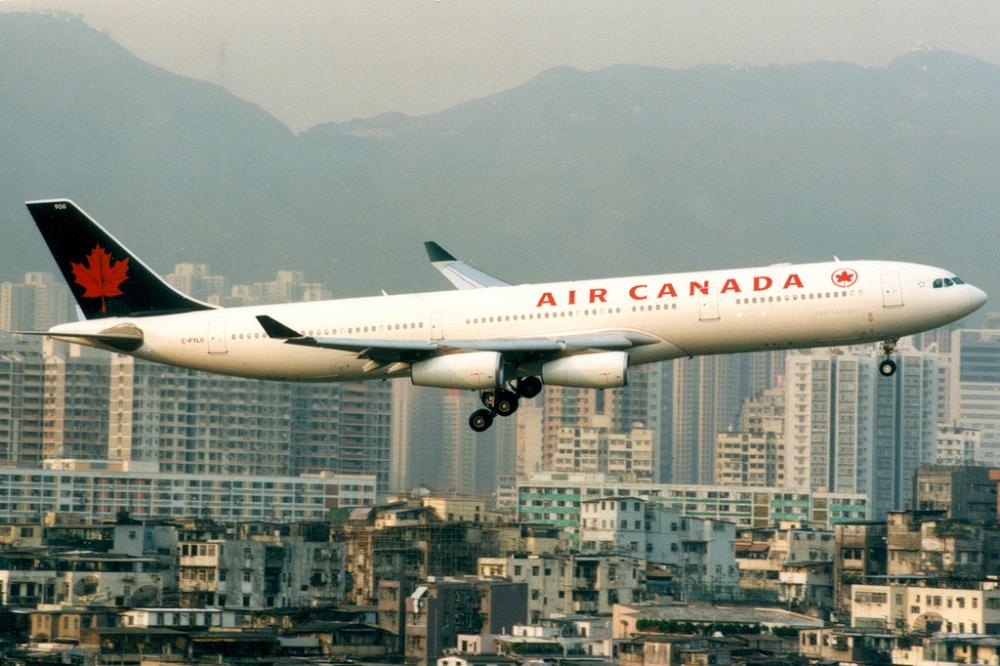
.jpg)
On 9 November 2005, Air Canada agreed to renew its widebody fleet by purchasing 16 Boeing 777s (10 -300ERs, 6 -200LRs), and 14 Boeing 787-8s. It placed options on 18 Boeing 777s and 46 Boeing 787-8s and -9s. In the meantime the airline leased Airbus A340-500 until the new jets arrived.
.jpg)
On 24 April 2007, Air Canada exercised half of their options for the Boeing 787 Dreamliner. Also Air Canada ordered and took delivery of the 18 Boeing 777s on order. Air Canada has also taken delivery of 15 Embraer 175s and 45 Embraer 190s.
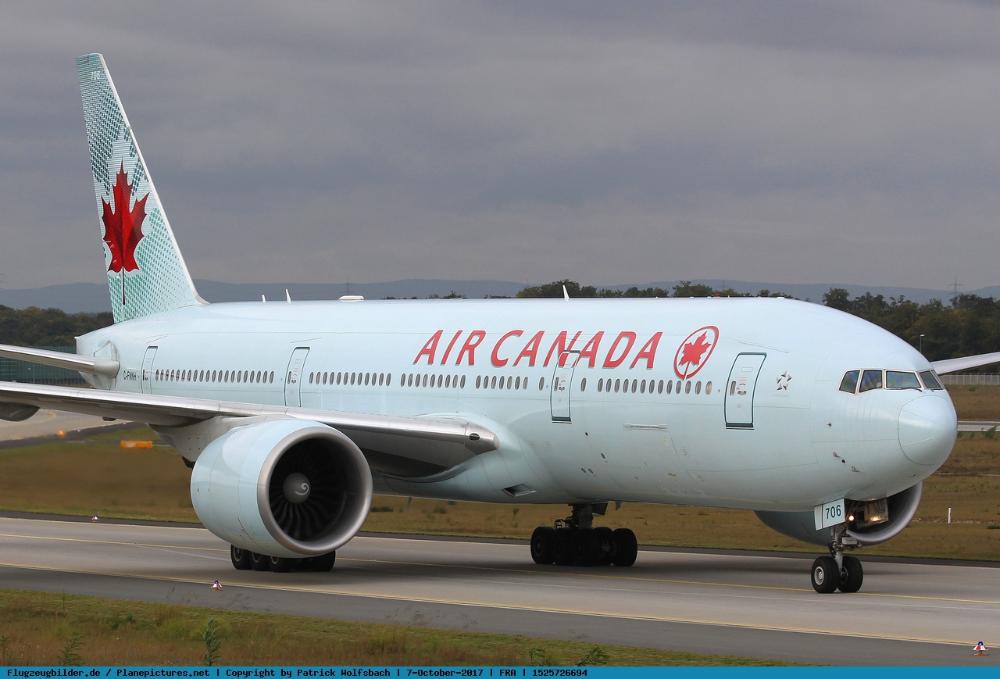
In 2010 Air Canada created a low cost division, Air Canada Rouge, which the parent company would transfer Airbus A319 and Boeing 767-300ER. Air Canada transferred all 15 E175s to Sky Regional Airlines to fly them under the Air Canada Express brand.
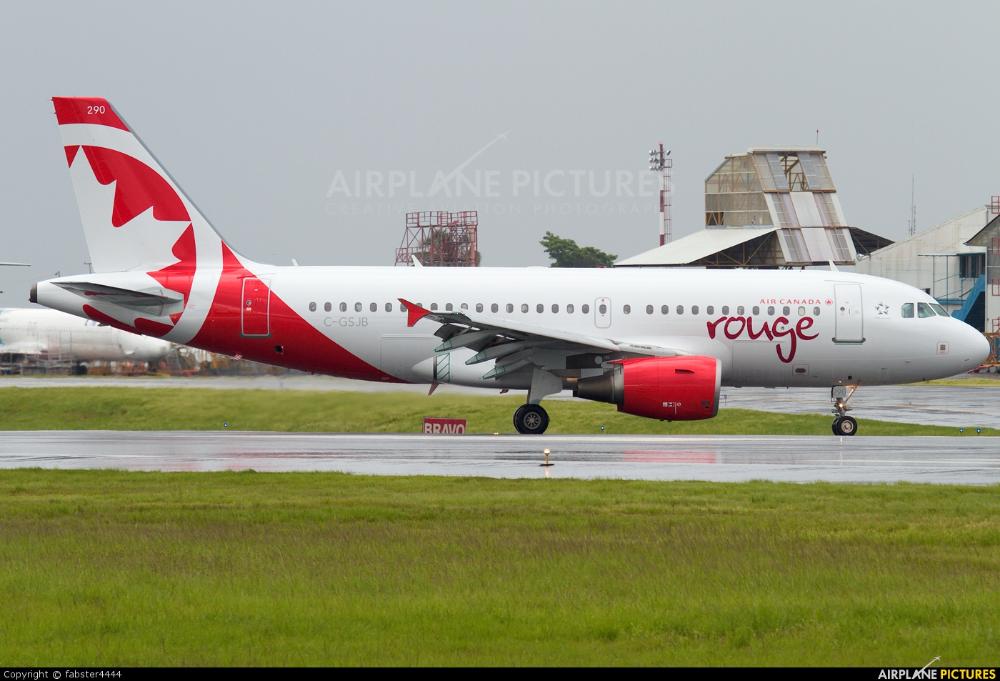
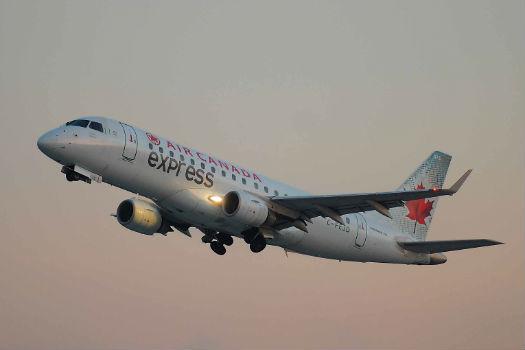
It started receiving it's new Dreamliners 787-8 and -9 versions from 2017 onwards. In July 2017, Air Canada reintroduced Premium Economy on its North American wide-body flights.
In February 2017, it marked the 80th anniversary of the airline, giving the ideal time to re-brand into a "retro" but modern livery which simplified the logo but adding a splash of black and thus took the opportunity to update services, crew uniform change and an improved service on all cabin classes. On 17 April 2018, Air Canada re-branded its international business class cabin as Air Canada Signature Class.
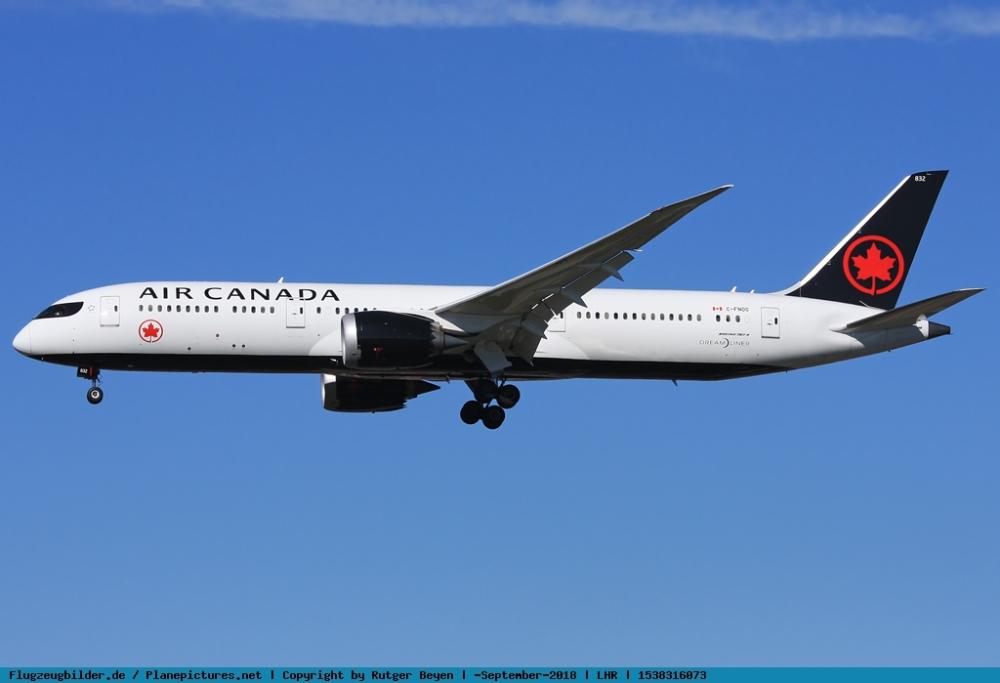
Air Canada also placed orders for Boeing 737 MAX single-aisle narrow body aircraft to replace the fleet of Airbus A320 series aircraft. The first B737-800 Max variant was delivered on 2 November 2017. As part of the deal, Boeing purchased 25 Embraer E190s from Air Canada that were retired in 2016. In July 2017, Air Canada reintroduced Premium Economy on its North American wide-body flights.
On 17 April 2018, Air Canada rebranded its international business class cabin as Air Canada Signature Class. Passengers can expect an enhanced menu, including the new Air Canada Signature Cocktail, a new amenity kit, chauffeur service in a BMW at its hubs during domestic to international connections, and access to the Air Canada Signature Suite at Toronto-Pearson Airport. Air Canada signed an agreement with Bombardier Aerospace to replace the E190s with Airbus A220/C-Series aircraft from 2019.
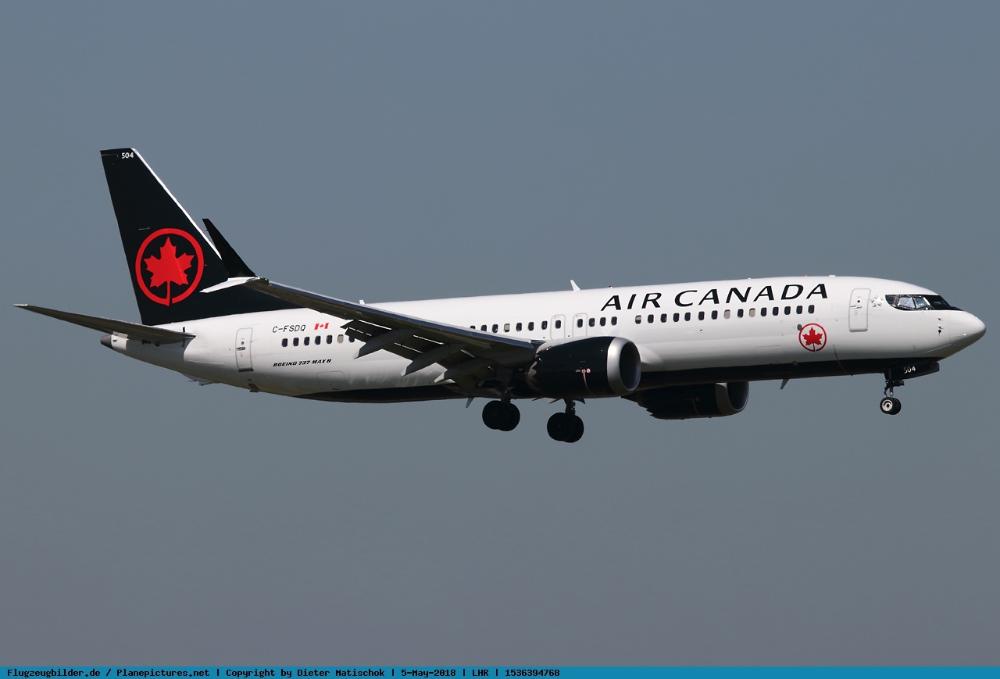
Today, Air Canada is Canada's largest full-service airline and the largest provider of scheduled passenger services in the Canadian market, the Canada-U.S and in the international market to and from Canada.Together with its Air Canada Express regional partners and leisure carrier,Air Canada Rouge, Air Canada serves over 38 million passengers annually and provides direct passenger service to more than 190 destinations on five continents.
History source: Wikipedia.org
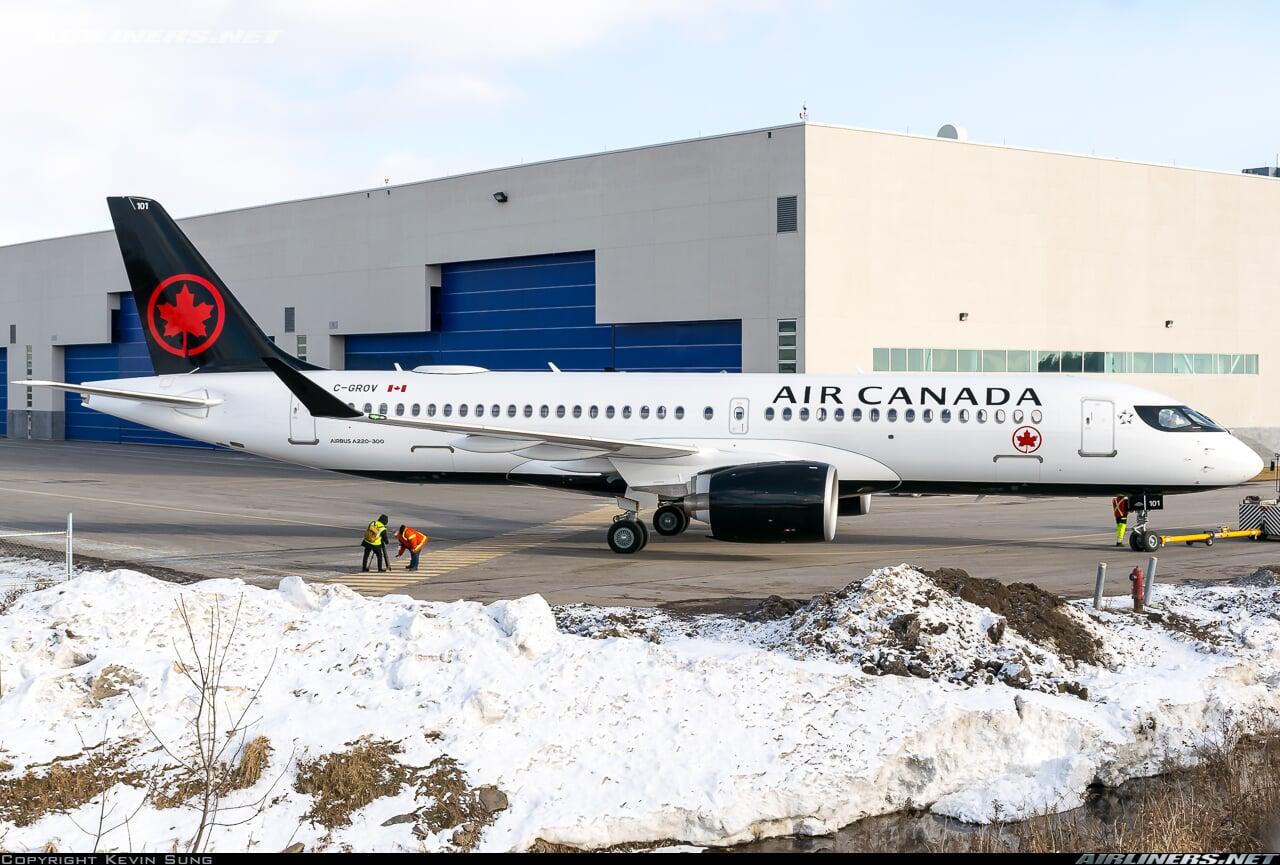
Operations and Destinations 🌍:
Air Canada is the official airline of Canada, it provides scheduled services to 194 destinations on six continents. Its largest hubs are Toronto Pearson, followed by Montreal-Pierre Elliott Trudeau, Vancouver and Calgary. It also has a large presence at Edmonton, Ottawa, Halifax and Quebec. Air Canada together with its Air Canada Express regional partners operate on average more than 1,500 scheduled flights daily. The location of Canada also makes it ideal for connection in the USA and the Caribbean.
The following destinations are those served by Air Canada. (It excludes airports only operated by Air Canada Rouge, and Air Canada Express).
| Region 🗺️ | Destinations 🌍🌎🌏 |
|---|---|
| ✈Canada (domestic) | Calgary, Comox, Deer Lake, Edmonton, Fort McMurray, Sydney, Halifax, Hamilton, Kelowna, London, Montréal, Ottawa, Quebec City, Regina, Saskatoon, St. John's, Toronto, Vancouver, Victoria, Whitehorse, Winnipeg, Yellowknife. |
| ✈USA | Anchorage, Austin, Boston, Charlotte, Chicago, Cleveland, Dallas, Denver, Vail, Fort Lauderdale, Fort Myers, Honolulu, Houston, Kahului, Kona, Lihue, Los Angeles, Miami, Newark, New York City, Orlando, Palm Springs, Philadelphia, Phoenix, Portland, Salt Lake City, San Francisco, Seattle/Tacoma, Tampa, Washington D.C., West Palm Beach.(USA). |
| ✈Central and South America | Bridgetown, Buenos Aires, Cancún, Cayo Coco, Cozumel, Curaçao, Fort-de-France, George Town, Hamilton, Havana, Ixtapa/Zihuatanejo, Liberia, Mexico City, Montego Bay, Oranjestad, Philipsburg, Pointe-à-Pitre, Providenciales, Puerto Plata, Puerto Vallarta, Punta Cana, Quito, Samana, San José del Cabo, San Juan, San Salvador, Santa Clara, Santiago, St. John's, São Paulo, Varadero, Vieux-Fort |
| ✈Asia | Beijing, Hong Kong, Shanghai, Delhi, Mumbai, Osaka, Tokyo, Seoul, Taipei. |
| ✈Europe | Vienna, Brussels, Copenhagen, Bordeaux, Lyon, Paris, Frankfurt, Munich, Reykjavík, Dublin, Shannon, Milan, Rome, Amsterdam, Warsaw, Madrid, Geneva, Zürich |
| ✈Africa and the Middle East | Algiers, Tel Aviv, Casablanca, Dubai. |
| ✈Australia and the Pacific | Brisbane, Melbourne, Sydney, Auckland |
*Destination list is for reference only. Please check directly with the airline for updates.
*Note some destinations are only seasonal.*Correct info as of October 2019.
Fleet ✈️:
Air Canada is the world's 10th largest passenger airline by fleet size. It has a big and strong fleet of modern equipment. it is currently in the process of a fleet renewal programme. With it's short, medium and long haul aircraft all getting a make over as newer aircraft arrive. Air Canada also operates with it's partner airlines in cooperation using it's aircraft under the Air Canada logo. (Air Canada Express is operated with Embraer jets E190, E175, Bombardier Jets CRJ100/200/900, Bombardier turbo-Propeller aircraft Q400 and Dash 8-100/300). (Air Canada Rouge uses Boeing 767-300 for long haul and Airbus A321 and A319 for short/medium routes).
The Air Canada main fleet* consists of the following aircraft:
| Network 🌐 | Aircraft ✈️ |
|---|---|
| ✈Domestic and Medium haul | Airbus A321-200, A320-200, Airbus A319-100, A220. (Boeing 737 Max-8 on hold). |
| ✈Long haul | 777-300ER, 777-200LR ,787-9, 787-8, 767-300ER, 737 Max-8 and Airbus A330-300 |
*Correct fleet info as of
Air Canada Photo Slide 📷:
Air Canada Safety Video (B787-8) 🎬:
Reviews ⭐:
 |  |
|---|---|
| ✅Best airline to fly to Canada, by frequencies and number of destinations. | 👎Expensive fares |
| ✅Route Network, connecting bigger and smaller cities through it's hubs. Clearance of US Immigration at Canada Transit stops. | 👎Some routes have changed to Air Canada Rouge, having to pay for extras, such as luggage or meals. |
| ✅Modern aircraft, with new ones arriving year by year. (Boeing 777-300 and Boeing 787-800/900 and 737 Max). | 👎Cabin configuration on the Boeing 777-300 on long haul routes is a 3-4-3 in Economy. |
| ✅Good Cabin luggage allowance , (No weight restriction on main cabin bag) | 👎 Some routes operated with older Boeing 767 planes not having upgraded entertainment systems. |
| ✅Member of the Star Alliance, for mileage redemption. | |
| ✅Good Service overall from Check-in to Cabin service |














.png)